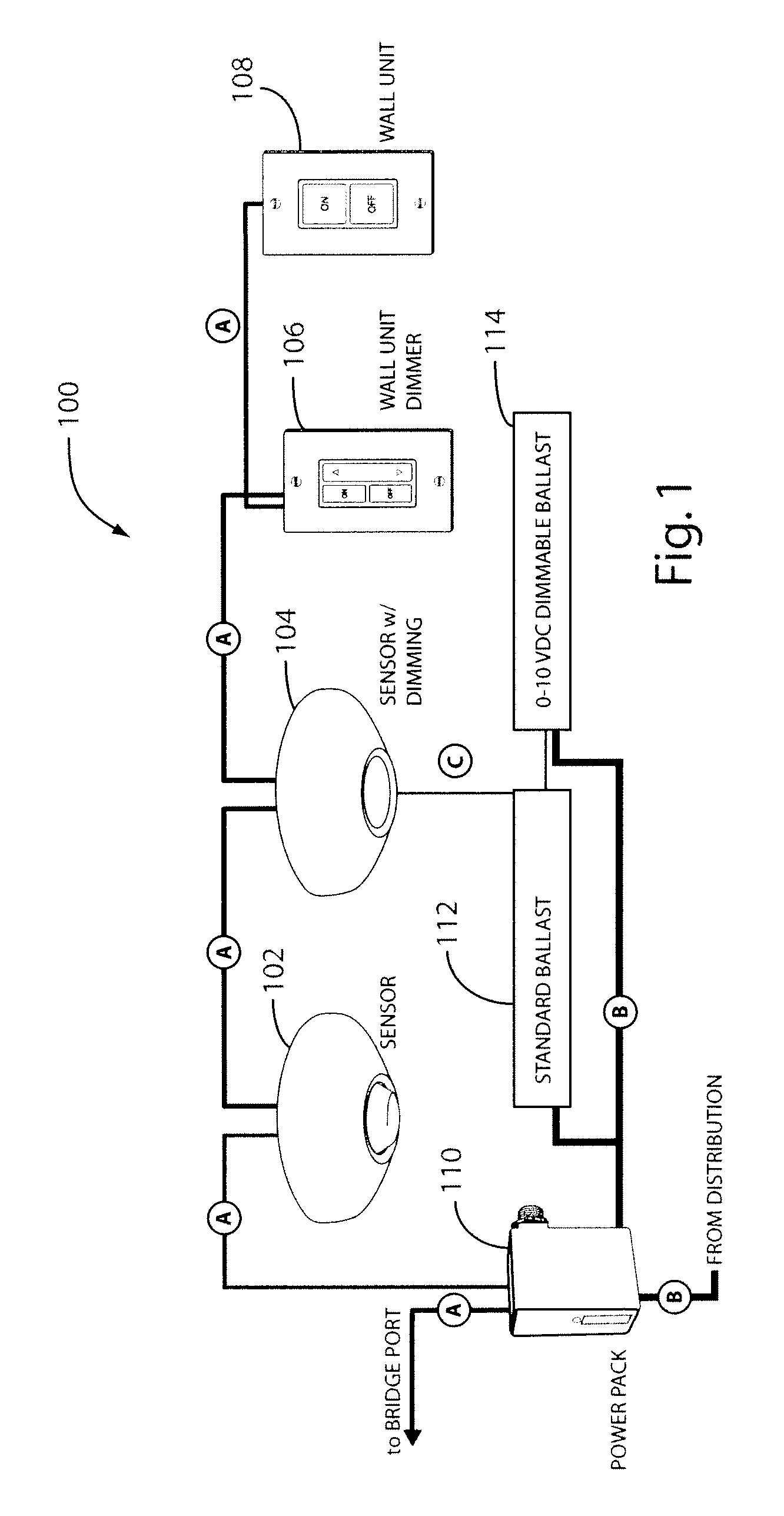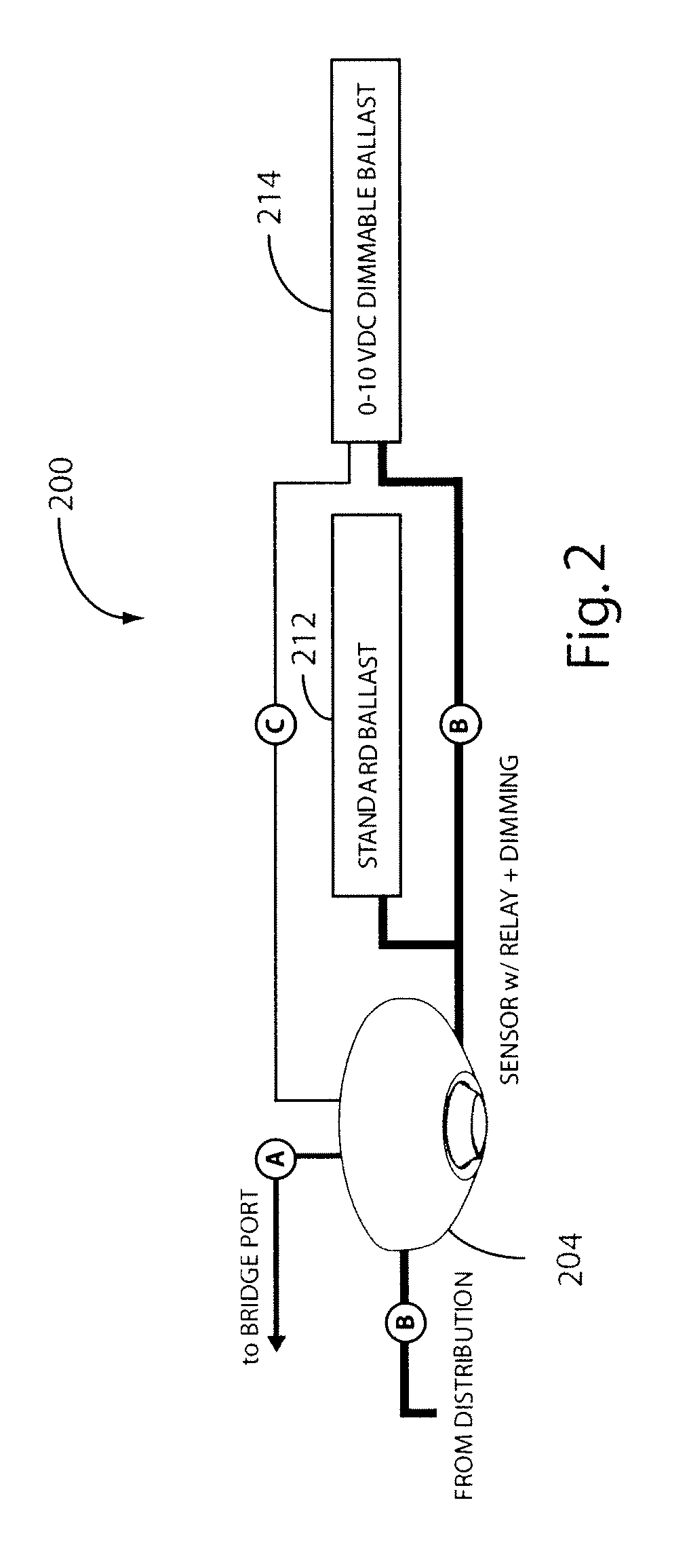Networked, wireless lighting control system with distributed intelligence
a lighting control system and wireless technology, applied in the field of networked lighting control systems, can solve the problem that web-based software does not make lighting control decisions, and achieve the effect of eliminating the tedious and time-consuming task of manually identifying
- Summary
- Abstract
- Description
- Claims
- Application Information
AI Technical Summary
Benefits of technology
Problems solved by technology
Method used
Image
Examples
Embodiment Construction
[0034]The lighting control system of the invention incorporates time-based, sensor-based, and manual control. Time-based control automatically switches lights on and off based upon preset time schedules or astronomical clocks. Sensor-based control automatically switches lights on and off based upon occupancy and / or daylight. And manual control switches lights on and off based upon manual toggling of a wall switch by a user.
[0035]The lighting control system of the invention advantageously provides numerous programmable settings / operational modes that can be configured individually for each lighting control zone. Settings include numerical device parameters, such as time delays for occupancy sensing and photocell set-points for daylight sensing. Other settings include switch operation (e.g., manual / automatic on), dimming limits, enable / disable sound detection, broadcast channel for switches and sensors (e.g., occupancy and daylight), and source channel for switches and sensors (e.g., ...
PUM
 Login to View More
Login to View More Abstract
Description
Claims
Application Information
 Login to View More
Login to View More - R&D
- Intellectual Property
- Life Sciences
- Materials
- Tech Scout
- Unparalleled Data Quality
- Higher Quality Content
- 60% Fewer Hallucinations
Browse by: Latest US Patents, China's latest patents, Technical Efficacy Thesaurus, Application Domain, Technology Topic, Popular Technical Reports.
© 2025 PatSnap. All rights reserved.Legal|Privacy policy|Modern Slavery Act Transparency Statement|Sitemap|About US| Contact US: help@patsnap.com



